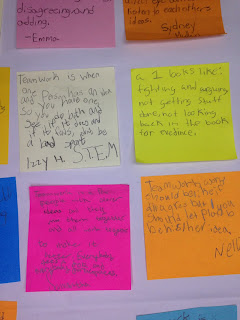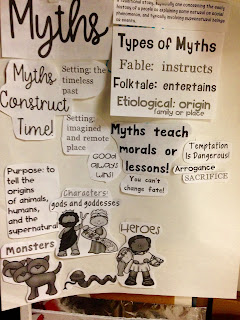What "Kind of" Worked!
First, I did try the idea of weekly moving of students. That is the best I could do with this practice. We never moved into the ability to do a daily change. It was a huge investment in weekly changes when I was working on that practice. I slowly moved into bi-weekly, which ended up becoming monthly. I just could NOT put that much time into moving students around, not in this testing environment. In addition to this, my administration became REALLY strict about bell-to-bell instruction. That included on Friday. We had our RtI invention at the end of the day, including Fridays. I just could NOT fit everything in. So, it became a monthly changing of seats.
Second, we tried truly Open Seating. It worked for a good amount of students. However, as you would predict, there were "those" kids who just could not do it. It was fewer than I thought it would be, which was surprising. Students had to be reminded to try new friends, even with the idea of trying subjects, etc. They tended to still want to migrate to their friends. Or, carry on a pattern.
Surprising Finds
Patterns-we soon discovered that certain students had patterns, including areas of the classroom that they wanted to sit in. It was very hard for these students to want to be flexible. At first, when kids found "their" spots, I allowed for them to stay in that location for more than one rotation. But then they never wanted to move! It became a need because as the year progressed, some of the other students needed to be separated. Same problems as a regular class! The thing I kept coming back to is that I wanted them to feel comfortable in a spot that they felt allowed for them the best opportunity to learn. That was the hardest thing to balance.
Partnerships-This was the most interesting discovery! Students really do have the ability to find learning partners. It quickly became apparent that this Open Seating opportunity allowed for partnerships to strengthen and grow. Frequently, students began to sit together. I began to watch these partnerships closely, to see if there was value within them. There was! I then gave permission for those partners to begin to stay together! This was amazing, but came with some consequences. Just like anything, this could wear on these kids. They actually then knew that it was time to move apart-and WOULD! Soon, these teams were back at it, working together although their seats were not. AWESOME!
Overall, I'd try Open Seating in my classroom again. Students can and do monitor their choices. They do determine where the best learning location in a room is. They do know when to give up friends and move to working partnerships. Again, this applies to the vast majority of students. Just like in anything, reflecting on open seating in the classroom is just as good for students as it is for the teacher!
Let me know your thinking on Open Seating in the Classroom! I'd love to know if you have tried it or you are willing to try it! If you are, I have just the product to get you started! Find it in my store! In the meantime, drop your thoughts in the comments!
Overall, I'd try Open Seating in my classroom again. Students can and do monitor their choices. They do determine where the best learning location in a room is. They do know when to give up friends and move to working partnerships. Again, this applies to the vast majority of students. Just like in anything, reflecting on open seating in the classroom is just as good for students as it is for the teacher!
Let me know your thinking on Open Seating in the Classroom! I'd love to know if you have tried it or you are willing to try it! If you are, I have just the product to get you started! Find it in my store! In the meantime, drop your thoughts in the comments!






















































